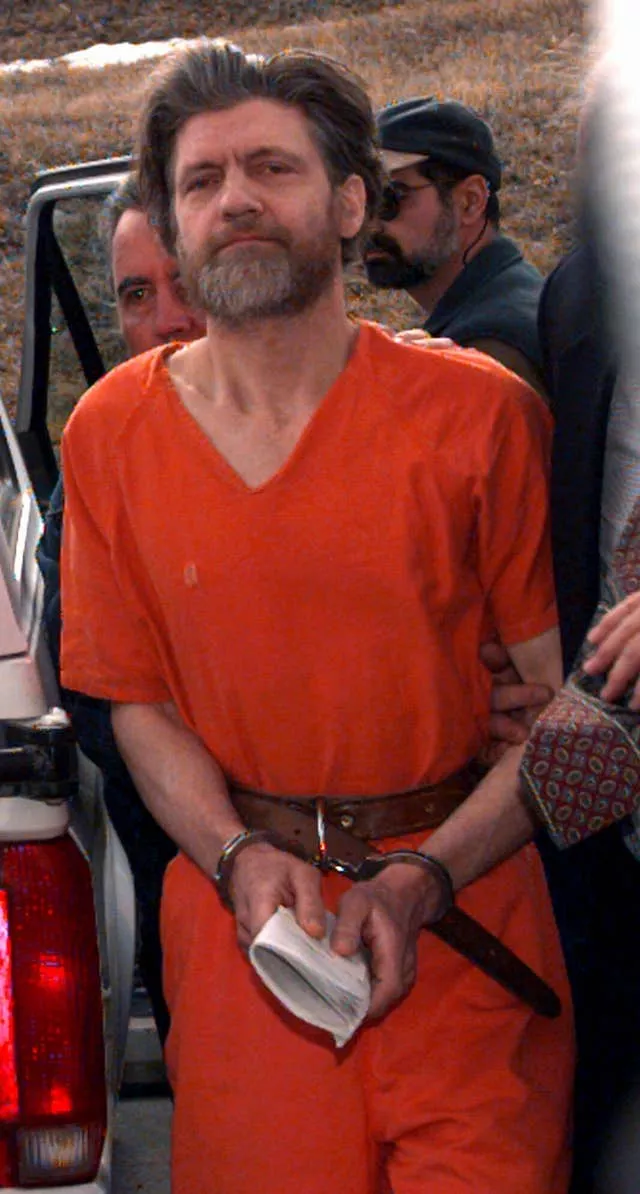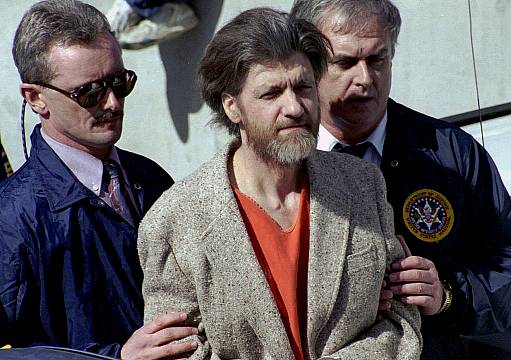Theodore “Ted” Kaczynski, the Harvard-educated mathematician who retreated to a dingy shack in the Montana wilderness and ran a 17-year bombing campaign that killed three people and injured 23 others, has died aged 81.
Branded the “Unabomber” by the FBI, Kaczynski died at the federal prison medical centre in Butner, North Carolina, Kristie Breshears, spokeswoman for the federal Bureau of Prisons, told The Associated Press.
He was found unresponsive in his cell early Saturday and was pronounced dead at about 8am, she said.
The cause of his death was not immediately known.

Before his transfer to the prison medical facility, he had been held in the federal Supermax prison in Florence, Colorado, since May 1998, when he was sentenced to four life sentences plus 30 years for a campaign of terror that set universities nationwide on edge.
He admitted committing 16 bombings from 1978 and 1995, permanently maiming several of his victims.
Years before the September 11 attacks, the Unabomber’s deadly homemade bombs changed the way Americans posted packages and boarded airplanes, even virtually shutting down air travel on the west coast in July 1995.
He forced The Washington Post, in conjunction with The New York Times, to make the decision in September 1995 to publish his 35,000-word manifesto, Industrial Society And Its Future, which claimed modern society and technology was leading to a sense of powerlessness and alienation.
But it led to his undoing.

Kaczynski’s brother David and David’s wife, Linda Patrik, recognised the treatise’s tone and tipped off the FBI, which had been searching for the Unabomber for years in the nation’s longest, costliest manhunt.
Authorities in April 1996 found him in a 10ft by 14ft plywood and tarpaper cabin outside Lincoln, Montana, which was filled with journals, a coded diary, explosive ingredients and two completed bombs.
As an elusive criminal mastermind, the Unabomber won his share of sympathisers.
But once revealed as a wild-eyed hermit with long hair and beard who weathered Montana winters in a one-room shack, Kaczynski struck many as more of a pathetic loner than romantic anti-hero.
Even in his own journals, Kaczynski came across not as a committed revolutionary but as a vengeful hermit driven by petty grievances.
“I certainly don’t claim to be an altruist or to be acting for the ‘good’ (whatever that is) of the human race,” he wrote on April 6, 1971. “I act merely from a desire for revenge.”

A psychiatrist who interviewed Kaczynski in prison diagnosed him as a paranoid schizophrenic.
“Mr Kaczynski’s delusions are mostly persecutory in nature,” Sally Johnson wrote in a 47-page report. “The central themes involve his belief that he is being maligned and harassed by family members and modern society.”
Kaczynski hated the idea of being viewed as mentally ill and when his lawyers attempted to present an insanity defence, he tried to fire them. When that failed, he tried to kill himself.
Kaczynski eventually pleaded guilty rather than let his defence team proceed with an insanity defence.
“I’m confident that I’m sane,” Kaczynski told Time magazine in 1999. “I don’t get delusions and so forth.”
The FBI called him the Unabomber because his early targets seemed to be universities and airlines.
An altitude-triggered bomb he posted in 1979 went off as planned aboard an American Airlines flight; a dozen people aboard suffered from smoke inhalation.
Kaczynski killed computer rental store owner Hugh Scrutton, advertising executive Thomas Mosser and timber industry lobbyist Gilbert Murray.
When Kaczynski stepped up his bombs and letters to newspapers and scientists in 1995, experts speculated the Unabomber was jealous of the attention being paid to Oklahoma City bomber Timothy McVeigh.
A threat to blow up a plane out of Los Angeles before the end of the July Fourth weekend threw air travel and mail delivery into chaos. The Unabomber later claimed it was a “prank”.
The Washington Post printed the Unabomber’s manifesto at the urging of federal authorities, after the bomber said he would desist from terrorism if a national publication published his treatise.







